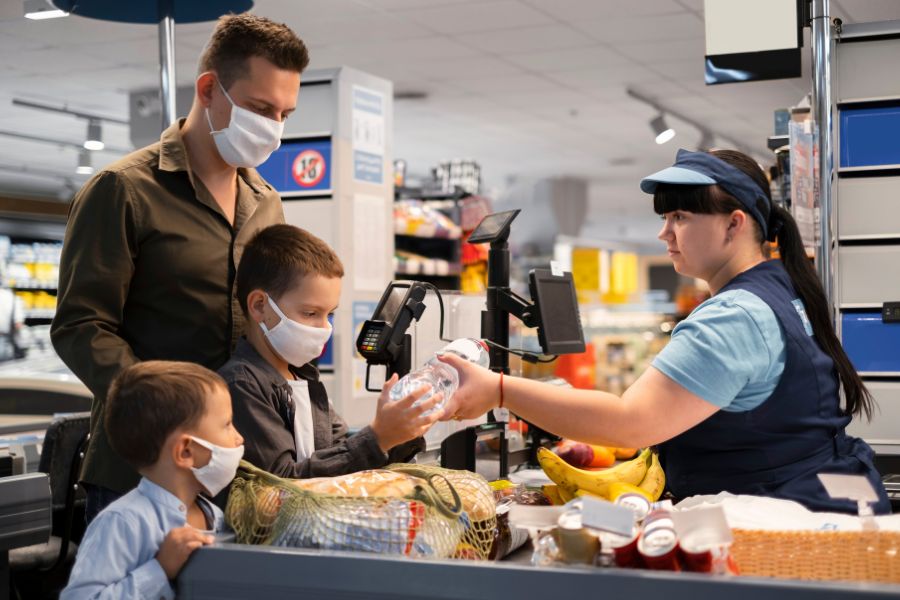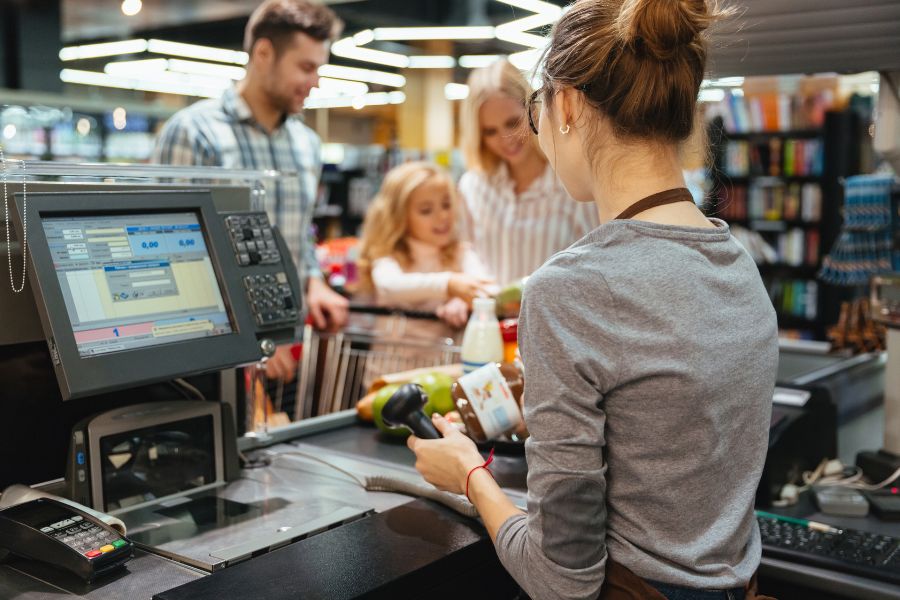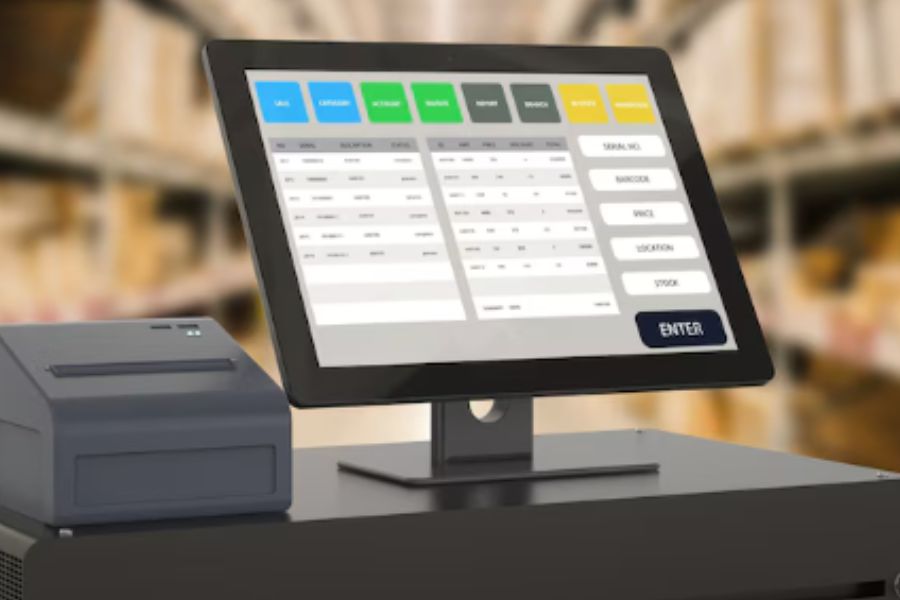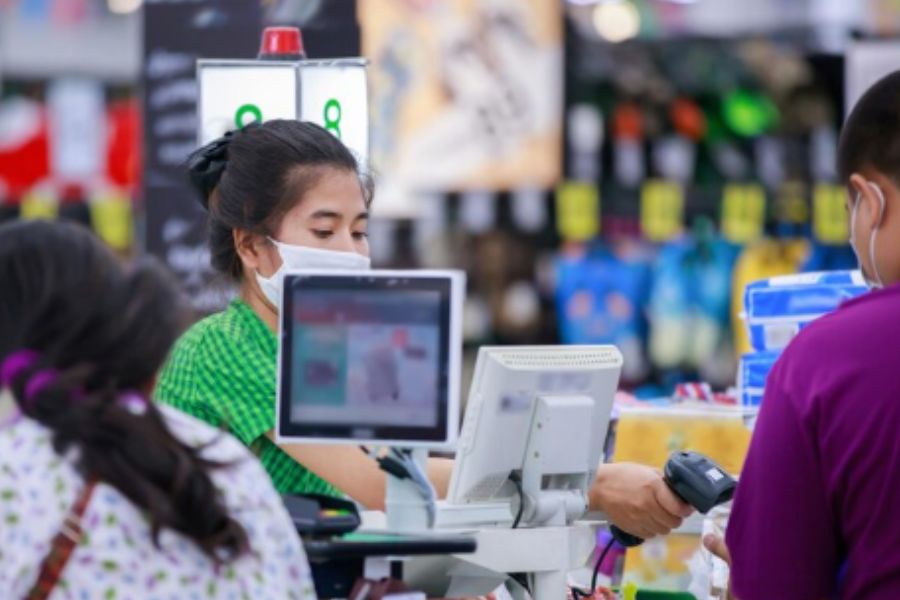Grocery stores in Indonesia face a wide range of challenges from tracking fast-moving stock to keeping up with digital payments and shifting buyer habits. To handle these demands, many store owners are turning to modern retail tools that can keep daily operations clear and manageable. Grocery store POS Indonesia now plays a much larger role than just recording transactions. In Indonesia, local providers continue to develop tools that reflect how people shop, pay, and interact in real life, not just online. This article explores systems that are gaining attention in 2025 for how well they match the everyday needs of grocery businesses across the country.
Highlights:
- Grocery retailers in Indonesia often face challenges like inventory mismatches, pricing errors, and long checkout times.
- A grocery store POS helps tackle these issues by automating stock tracking, standardizing pricing, and speeding up transactions.
The Grocery Market in Indonesia
Indonesia is a fascinating country. As the world’s fourth most populous nation, it brings together the largest Islamic community and a strong, growing economy, now ranked tenth globally in terms of purchasing power parity. That same energy shows up in its grocery sector, which reflects both tradition and change.
While traditional markets still hold 76% of the share, urban areas are seeing a rise in modern retail as city dwellers look for quicker ways to shop and prefer stores that meet various needs in one place.

This mix of old and new reflects the country’s cultural depth and geographic variety, one of the reasons its retail scene stands out across Southeast Asia.
- Strong Presence of Traditional Markets: Traditional markets, known locally as pasar tradisional, continue to dominate daily food shopping. These markets thrive on personal relationships, flexible pricing, and consistently fresh produce. Their strong foothold makes it difficult for modern grocery chains to win over loyal shoppers.
- Regional Preferences Shape Product Choices: Consumer preferences are heavily shaped by local customs. People favor fresh, unprocessed items over packaged goods, which poses a challenge for uniform product sourcing and consistency across regions. Trying to meet these expectations while maintaining quality adds pressure on supply operations.
- Infrastructure Limits Expansion: Moving goods between urban hubs and remote districts comes with high transport costs and unpredictable delays. Warehousing and delivery systems often fall short in less developed areas, making stock coordination across stores a constant challenge.
- Income Gaps Demand Flexible Pricing: Pricing models must also account for the uneven distribution of income across the country. What sells in Jakarta may be out of reach in smaller towns. Grocery stores often have to adjust their product mix and pricing strategies to reflect local purchasing power, which complicates central planning and forecasting.
- Regulatory Barriers Slow Growth: Regulations at the municipal level further complicate expansion. Some local policies favor traditional vendors, and restrictions on zoning or trade licenses can slow down or even block new store openings. This fragmented legal framework creates uncertainty for chains trying to grow.
- Changing Payment Preferences: While cash still leads in in-person transactions in 2024, its share is falling. Mobile wallets are taking its place, especially among younger shoppers and urban dwellers. Apps like Ovo and ShopeePay are widely used due to their connections with food delivery services and cashback campaigns. These apps have started to shift spending behavior, especially in informal food settings and small retail outlets.
Running a multi-location grocery business in Indonesia requires a localized approach, flexible operations, and a strong understanding of regional dynamics. Success relies not only on scalability but also on cultural awareness, efficient logistics, and adapting to how consumers shop, pay, and engage with technology, such as point-of-sale systems in grocery stores across Indonesia.
Choosing the right POS for grocery store operations can help manage complexity, support regional variations, and improve customer experience across diverse markets.
Criteria for Choosing the Best Grocery Store POS in Indonesia
The challenges in Indonesia’s grocery landscape make POS selection a strategic step. A well-suited grocery store POS Indonesia system helps businesses keep pace with market demands and regional differences.
- Easy to Learn, Fast to Roll Out: Staff adoption hinges on simplicity. A user-friendly interface and clear workflows shorten the training curve. Support tools such as onboarding guides and responsive service teams help reduce friction during daily operations.
- System Compatibility: POS tools should work smoothly with inventory software, accounting programs, and customer data platforms. Strong system compatibility eliminates repetitive tasks and helps maintain workflow consistency across store branches.
- Remote Access and Cloud Setup: A POS with cloud access allows real-time visibility across locations. Owners and supervisors can track inventory levels, monitor transactions, and view business metrics without being on-site. Remote tools also support data protection and allow faster updates.
- Balancing Value with Spend: The right system balances features and cost. Assess subscription rates and setup fees against how the platform supports revenue tracking, stock control, and shopper satisfaction. A well-chosen POS for grocery store Indonesia helps keep long-term investments in check while supporting growth.
Top-Rated Grocery Store POS in Indonesia for 2025
1. ConnectPOS
ConnectPOS stands out as a grocery store POS Indonesia solution built to support grocery chains that operate both online and in-store. It brings together sales, inventory, and customer data in real time, providing grocery retailers with tools to handle daily operations more smoothly.
Features:
- Multi-Branch Oversight from One Place: Manage product availability, pricing structures, and promotional campaigns across all locations using a centralized control panel. This setup supports consistency and reduces manual input errors.
- Live Inventory Visibility: Track product levels across stores as transactions occur. This helps avoid running out of key items or tying up capital in excess stock.
- Self-Service Checkout Options: Designed for grocery formats, this supports faster checkout experiences and helps ease peak-hour congestion.
- Loyalty Program Personalization: Create shopper rewards and promotions based on actual purchase history. Customers feel recognized, and return visits are encouraged.
- Tailored Pricing per Store: Price points can be customized to reflect different market conditions, letting each branch meet the expectations of its local shopper base.
- Unified Retail Presence: ConnectPOS links smoothly with platforms like Shopify POS and Magento POS, keeping store and online activity in sync.
- Barcode Support: Checkout becomes faster and more accurate through barcode scanning, reducing errors at the point of sale.
- Detailed Business Insights: Gain access to reports covering revenue patterns, product movement, and shopper trends, which are valuable for planning stock or promotions.
- Cloud-Based Operation: Remote access allows owners and managers to check sales activity, monitor store performance, and make updates without being on site.
- Support for Local Payment Options: Catering to Indonesian shoppers, ConnectPOS integrates with popular wallets such as OVO, GoPay, and Dana, along with traditional methods.
Benefits:
- Ready for Business Growth: ConnectPOS adjusts as grocery stores expand. Whether serving a single neighborhood or operating across regions, the system adapts without disruption.
- Clear Business Visibility: Built-in analytics help identify what’s selling, when peak hours occur, and how customers behave at checkout. These insights support better planning and smarter decisions.
- Quick to Learn: The interface is straightforward, making it easy for new staff to get familiar with the system. This shortens the learning curve and keeps daily tasks on track.
2. Moka POS
Moka POS stands out in Indonesia for its clean design and budget-friendly approach. This POS for grocery store Indonesia is built on a cloud platform, it helps grocery businesses handle sales and stock with ease, while supporting basic customer and employee tools.
Features:
- Stock Control: Automatically updates inventory and sends alerts when quantities fall below the set limit.
- Sales Monitoring: Tracks daily figures, popular items, and profit margins in real-time.
- Payment Flexibility: Works with cash, card, and digital payments such as Gopay and OVO.
- Staff Oversight: Records individual staff sales and activity to guide staffing decisions.
Benefits:
- Local Help Desk: Built in Indonesia, the support team speaks the language and understands market conditions.
- Entry-Level Pricing: A smart pick for stores with limited starting budgets.
- Simple Use: Easy to install and quick for staff to learn.
3. Pawoon POS
Pawoon POS is a grocery store POS Indonesia that focuses on smaller shops, including groceries, and helps handle transactions and product tracking without complications.
Features:
- Inventory Oversight: Tracks products, including different sizes or weights, to stay on top of stock.
- Reporting Tools: Creates detailed records for sales and taxes, useful for business planning and audits.
- Phone Access: Lets managers check store activity through their mobile devices.
- Promotional Tools: Makes it easy to run short-term price cuts or bundle deals.
Benefits:
- Budget-Friendly: Designed to match the needs and resources of smaller stores.
- Remote Access: Store data lives in the cloud, so checking in from anywhere is easy.
- Fits Growing Stores: Works well for neighborhood shops and can support more locations as they expand.
4. Olsera POS
Olsera POS supports a range of retail sectors in Indonesia, including grocery stores. It helps manage day-to-day operations through a connected system built to handle product tracking and sales activity.
Features:
- Stock and Sales Tracking: Keeps inventory counts updated while monitoring each sale as it happens.
- Loyalty Tools: Provides options for setting up rewards and point tracking for returning customers.
- Accounting Sync: Works with popular accounting platforms to support easier recordkeeping.
- Barcode Reader Support: Speeds up checkouts with quick item scanning.
Benefits:
- Wide-Ranging Reports: Generates data on staff output, popular items, and overall performance to guide decisions.
- Adjustable Settings: Can be set up to match different pricing models, discount rules, and store preferences.
- Unified Platform: Sales, inventory, and customer interactions all connect in one place, avoiding the need for extra tools.
FAQs: Grocery Store POS Indonesia
Why do grocery businesses in Indonesia need a POS system?
It helps organize sales transactions, keep an eye on stock levels, and monitor employee performance. Some systems also allow real-time access, remote control, and local support, which fit well with the way stores operate across cities or regions.
Does the POS for grocery store Indonesia work across several store locations?
Many POS systems like ConnectPOS or Olsera, are made to handle more than one branch. They help store owners view data across outlets, adjust pricing, and apply promotions without needing to be on-site.
Is the grocery store POS Indonesia easy to set up?
Most are designed with small business owners in mind, meaning the setup doesn’t take long. Companies like Moka and Pawoon focus on simplicity, so staff can start using them after a short training session.
Conclusion
The way a store runs often comes down to the tools behind the counter. A POS for grocery store Indonesia shapes how staff ring up items, how stock gets checked, and how customers experience checkout. In Indonesia’s busy retail landscape, small improvements can lead to big differences across a week or a month.
For grocery businesses looking for one platform that brings offline and online sales together while handling multiple store locations, ConnectPOS stands out as a strong choice of grocery store POS Indonesia. Its setup supports everything from barcode scanning to local payment methods – no extra complexity needed. To see how ConnectPOS works in real stores, contact us now!



